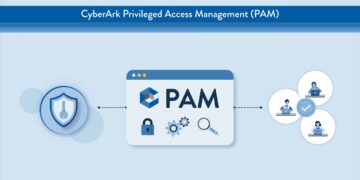Introduction
This article seeks to provide you with some insights on how to create an accessibility conformance report (ACR) using a voluntary product accessibility template (VPAT).
A VPAT is an evaluation tool that was developed by the Information Technology Industry Council (ITI) in partnership with the General Services Administration (GSA) to assist manufacturers and vendors of electronic and information technology (EIT) products and services determine how closely their products and services conform to each of the established accessibility standards.
The development of the VPAT template followed the Congress’ amendment to the Rehabilitation Act requiring federal agencies to make their EIT accessible to people with disabilities regardless of whether they work for the federal government or not.
Federal agencies therefore require vendors of digital offerings to provide evidence of the accessibility of their products and services, sometimes referred to as “VPAT compliance,” as part of the procurement processes.
Filled-out VPATs, which are referred to as ACRs, enable contracting officials and procurement teams to assess how commercial digital products and services support accessibility. They also allow product and service manufacturers and/or vendors to document how well their products and services meet the applicable accessibility standards.
An ACR, which is sometimes referred to as a VPAT ACR, is a representation of how a digital product or service meets the applicable accessibility standards and guidelines. To create the VPAT ACR, the product or service owner or developer must first perform an accessibility test on the targeted product or service based on the criteria and technical specifications provided in the appropriate accessibility VPAT in order to complete the product’s or service’s ACR.
Creating An ACR Using A VPAT
There are five steps through which you can create an ACR for your product or service with the help of a VPAT template. These are: downloading the correct edition of the VPAT template from the ITI website; filling out the VPAT ACR title page; understanding the three columns in the VPAT tables; completing Table 1, which deals with success criteria level A, and, if applicable, Table 2, which deals with success criteria level AA; determining the applicability of the prevailing technical standards, namely, Section 508 and the European Union’s EN 301 549; and performing a final check to make sure your ACR is complete and accurate.
Step 1: Downloading The Appropriate Accessibility VPAT
Accessibility VPATs are downloaded free of charge from the ITI website. If your product or service is indented for sale to the U.S. federal government, you should download the Revised Section 508 or the International (INT) editions of the VPAT template. If it is intended for use in Europe, the accessibility VPAT you should download is the VPAT EU (EN 301 549) Edition.
Step 2: Fill Out The VPAT Title Page
The VPAT usually has a number of introduction pages with instructions. Ensure you read those instructions carefully. Once this is done, ensure to remove the instruction pages from your final ACR.
VPAT templates are technically complex to fill out and are best completed by independent entities with experience and expertise in digital accessibility. Hiring a third party to fill out the VPAT for you tends to lend credibility to the final ACR you generate.
Step 3: Understand The 3 Columns In The VPAT Tables
A good VPAT ACR is one that has been completed accurately. That is why you need to understand what the three columns in the VPAT tables require.
The first column focuses on “criteria.” It states the criteria to be covered by the column. The second column focuses on “conformance level.” When filling out this column, ensure that you use one of the four phrases: “supports,” “partially supports,” “does not support,” and “not applicable” for the category or categories that encompass your product or service.
The third column is for capturing the remarks and explanations. It is used to provide further insights regarding why the product or service partially supports or does not support the established guidelines. If the product or service supports a given guideline, you may pen your remarks, it is not mandatory.
Step 4: Completing The Success Criteria With Levels A, AA, and AAA Access
If your product or service is web content, electronic document, a software, or an authoring tool, then the Web Content Accessibility Guidelines (WCAG) apply to the product or service. The success criteria tables for such products and services are laid out in the VPAT template as Levels A, AA, and AAA.
Step 5: Counterchecking The Accuracy Of Your VPAT ACR
Once the filling out of your VAT is done, you need to perform a final check to ensure everything is captured properly and accurately before you publish it. Some of the factors you should check include use of the correct edition of the VPAT, removal of the instruction pages from the final ACR, ensuring the information field at the top of the ACR is correct and complete, the success criteria tables should be correctly and completely filled out, the correct phrases are used to describe conformance levels, the remarks and explanation section is duly completed, and the VPAT ACR is accessible.
Need Help With Creating An ACR Using A VPAT?
If you need assistance with creating an ACR using a VPAT, call ADACP at (626) 486-2201 at your earliest convenience to arrange a consultation. Consultations are always free!



































































